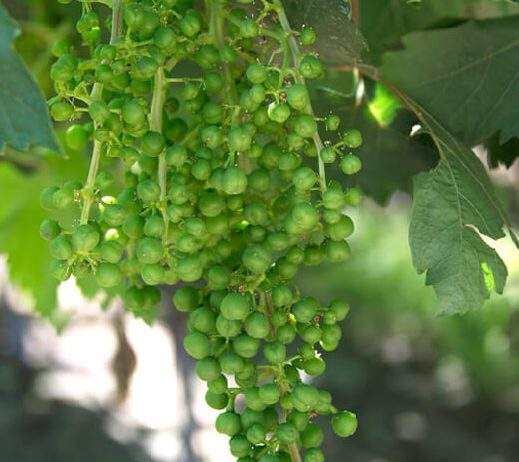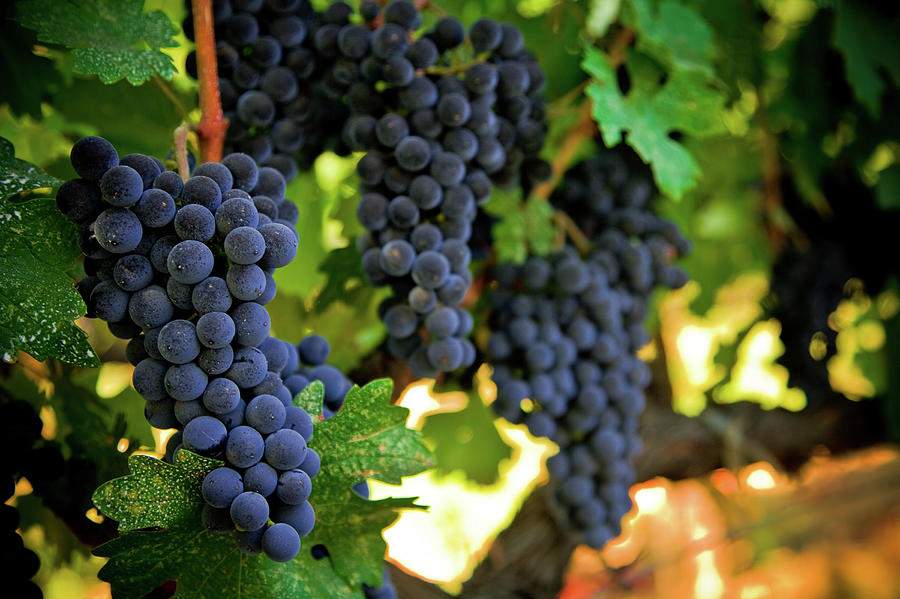Berry Maturation: bud to cluster in 3 easy steps

Berry Maturation is a crucial process in winemaking. The way berries grow and develop has a HUGE impact on the way your wine turns out. Berry growth happens in a three-step process over the course of roughly 120 days. Hopefully, after reading this blog, you’ll gain insight into this complicated, yet fascinating process.
Stage One: Cell Division Phase
The first phase of this three-step process is called the cell division phase and occurs within the first 60 days of development. In this phase, the grape begins to split its cells at an extremely fast rate. During this rapid cell division, two key acids are formed: tartaric and malic. Yes, I know what you’re thinking, why should we care?
The cell division phase is when the majority of the berries’ tartaric and malic acid accumulates. The concentration of acids is constantly changing due to metabolic activity, but by the end of stage three, tartaric acid and malic acid make up 90% of the acid found in the berry. These acids have a huge impact on the way the wine tastes. Depending on whether you want a crisper wine or smoother wine, it is crucial to measure the malic and tartaric acid content in your samples throughout production.
Fun Fact
The acidity of wines varies throughout regions. Why is wine more acidic in Germany compared to the Mediterranean? The answer: malic acid! When exposed to higher temperatures and climates, malic acid is broken down within the grape, resulting in a much softer wine. This process is called malic respiration.
To receive nutrients during cell division, berries rely on both their own ability to photosynthesize and on plant tissues called the phloem and the xylem. The phloem carries photo-assimilates (nutrients produced by photosynthesis) from the leaves while the xylem carries water and nutrients from the roots.
These berries are pictured during the middle of the cell division phase. During this phase, the berry reaches about 60% of its final size. Think of a pea on some serious steroids.

Stage Two: Lag Phase
In this phase, chemical signals stall the grape growth to refocus its energy on seed development. The duration of the lag period depends heavily on the varietal and weather but averages 10 to 15 days. If the temperature is too hot or too cold, embryo development will slow and delay maturation. Once mature, the seed signals the grape to transition into the berry’s last phase of development. For the most part, the berries have remained the same size and color as when they entered the lag phase. Remember: Patience is key here…no one likes a sour-tasting grape.
Fun Fact
If you pick a grape that’s not ripe, it will taste just like a green pepper! Ew…
Stage Three: Veraison and Ripening
Let me start off by defining veraison because, let’s be real, it’s not exactly common knowledge (unless, of course, you work at a winery yourself, then you should probably already know about this…). Veraison is defined as the transformation from cell division to cell growth. But what exactly is the difference? This stage is when individual grape cells grow larger, but the number of cells themself remains constant. A visual cue of veraison is a change in the size and color of the berries and a softening of the texture.
Throughout the following ripening stage, there is a change in the way the grape receives its nutrients. The grape is no longer able to photosynthesize and flow from the xylem effectively stops. Additional water, sugar, and other metabolites are supplied by the phloem. As the grape begins to metabolize acids, there is a large increase in pH levels from the 2 to 3 range. Additionally, sucrose is broken down into glucose and fructose, thus increasing fermentable sugar levels within the grape. These processes allow the grape to become soft and colorful. By the end of this stage, approximately 60 days long, the grapes are ready for sampling.

This is it! These grapes are now their fullest, juiciest, and most delicious selves! Now the grapes are fully ripened and ready to be picked. Look at that vibrant purple coloring–Stunning!
Fun Fact
Grapes have the highest sugar content in any fruit and, because of this, are the most fermented product around the world. 🍇➡🍷
Big Word Review
Fancy words don’t have to be scary…
Veraison
(verr-ray-zohn)
This French term means “the onset of ripening”. It is a pivotal stage in the grape’s life, signaled by sugar and nutrient accumulation, replacing chlorophyll with anthocyanins (red) or cartenoids (white), as well as decreasing acidity.
Malic Acid Respiration
In plants, respiration is almost the opposite of photosynthesis. It is the process of metabolizing nutrient resources (such as malic acid) to produce energy for the plant. Respiration occurs at a much higher rate when the temperature is warmer.
Ripening
The time period in which the grapes will gain sugar, decrease acidity, change color, soften, and develop aromas and flavors. In short, the fruit becomes highly palatable and ready for fermentation. Where veraison is the trigger point, ripening is the final development process.
Resources:
Raquel Kallas & Tim Martinson. “Grapes 101.” Grapes 101 | Viticulture and Enology, https://grapesandwine.cals.cornell.edu/newsletters/appellation-cornell/2018-newsletters/issue-34-august-2018/grapes-101/
The Australian Wine Research Institute. (2010). Vinti-notes: understanding grapevine growth. Berry development – up to veraison (phase 1 and 2). https://www.awri.com.au/wp-content/uploads/4_phenology_berry_development_1_and_2.pdf
The Australian Wine Research Institute. (2010). Vinti-notes: understanding grapevine growth. Berry development – Ripening (Phase 3). https://www.awri.com.au/wp-content/uploads/5_phenology_berry_development_ripening_3.pdf
